The boys may be hitting the court to play on tonight’s highly anticipated NBA ‘All Star Game’, but as ever, the girls found ways to hit the streets of Houston to get their play on as well.
H-Town was buzzing this weekend with celebrity-sightings galore. Top divas like Drake, Beyonce, Alicia Keys, Monica, and so many others made their rounds across the city for a number of events.
See all the snaps below:
Beyonce & Jay Z Celebrate at ‘2 Kings’ Dinner
Monica, Drake, 2 Chainz, and Alicia Keys Hit the Court For NBA ‘Slam Dunk Contest
Letoya Luckett’s Joined By Cassie, Christina Milian, Lance Gross, & More For ‘Glam Slam Beauty Pop’ Shop
Your thoughts?


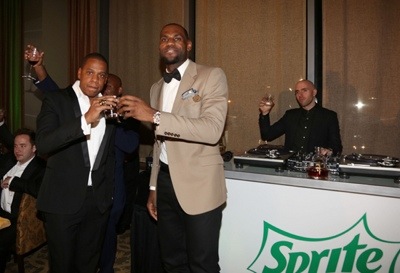
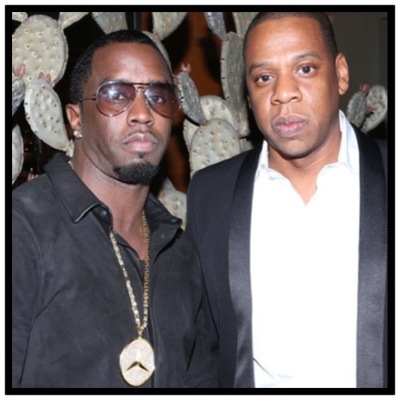
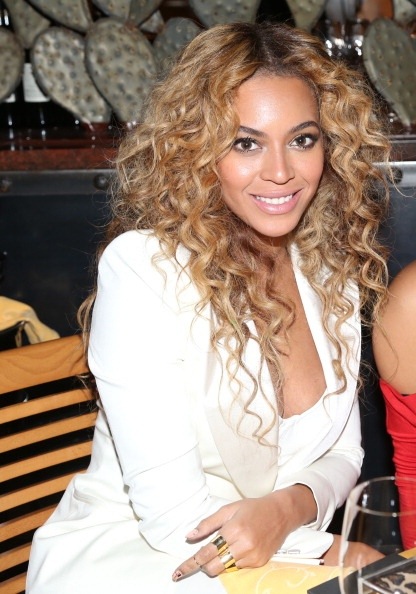
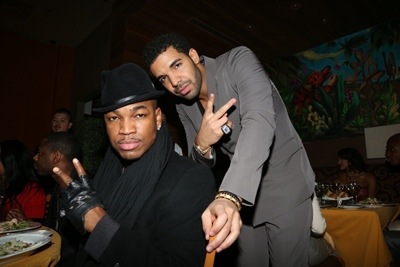
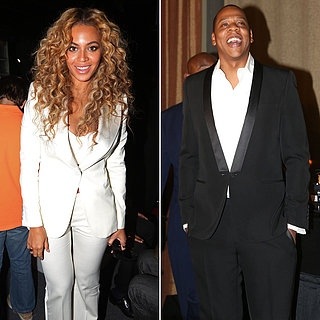
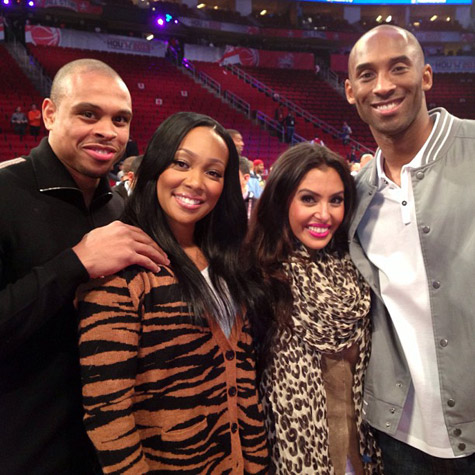
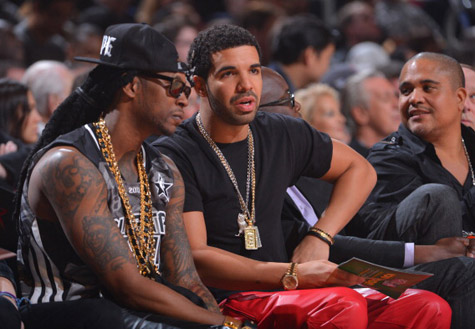

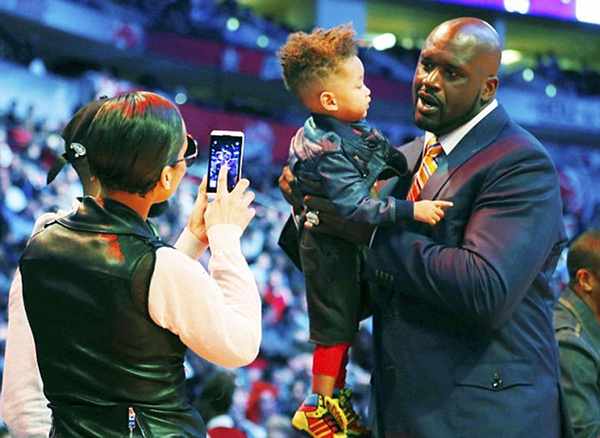
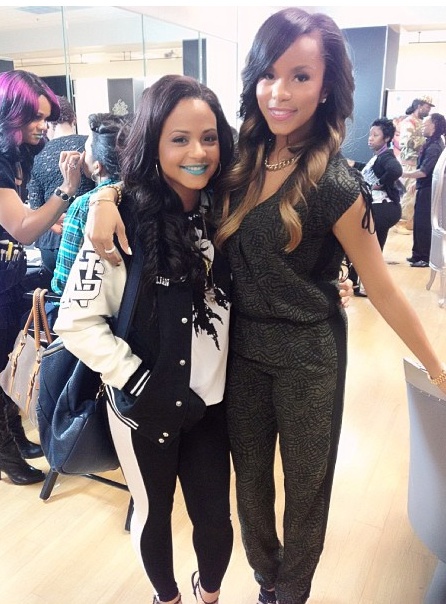


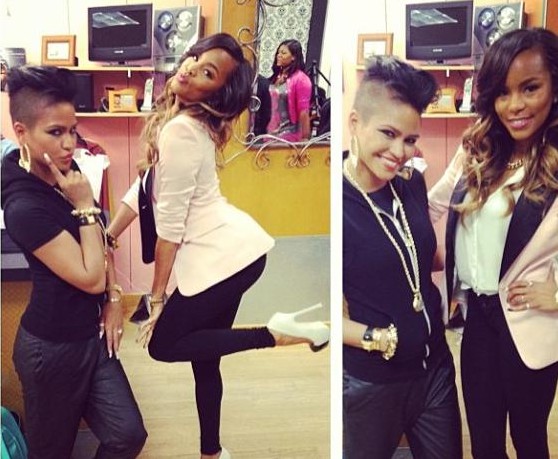






















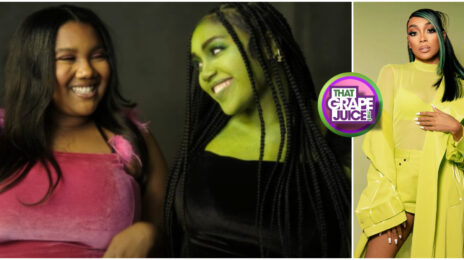
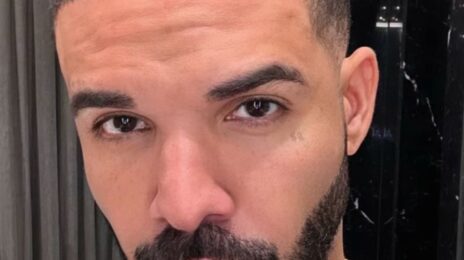
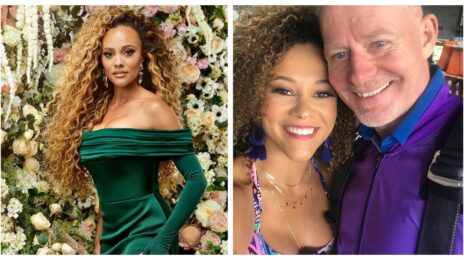


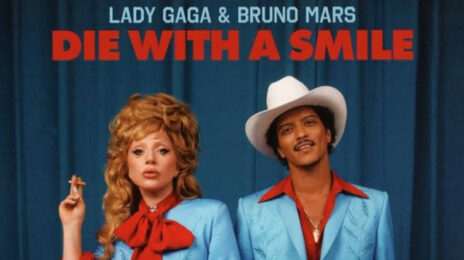

Beyonce looks gorgeous chile!! And Sam you ain’t s*** for that Drake shade! Lmao
Top divas like Drake, Beyonce, Alicia Keys, Monica, and so many others made their rounds across the city for a number of events.
^Dead
beyonce looks incredible!!! wow…
Letoya Luckett is just sooooo damn gorgeous!!!!!!
Kobe is the man, Viva Los Angeles Lakers.
MONICA LOOKS GORGEOUS !! Her and Beyonce are my girls…
BEYONCE LOOKS LIKE A VERY RICH B**** AND I LOVE IT.
Beyonce in the building. Beyhive sting b******.
Alicia’s baby is so adorable ♥ He’s such a cutie pie. They all look good.
‘Top divas like Drake….’ Lmfao. And BEYONCE you look gorgeous mama. That baby girl of yours is also such a cutie pie!
And lil Egypt has gotten so big!
bey look beautiful as always god bless her and her family for life
Letoya looks like MONEY!!! I LOVE HER!!
Bey is always looking good I love her
SERIES: First Instalment In ‘Vocal Summer Summary’ – Beyoncé, Christina, Mariah, Rihanna, Whitney…
‘I think today far too many young singers are out there in front of audiences “doing it” before they are, actually, in control of a basic (singing) technique’
Joan Sutherland – Legendary opera singer (1926-2010)
With the arrival of summer came the realisation that we finally have the time to discuss the vocal abilities of the top artists of today in detail. Then we wondered: ‘Why should we stop there? Why not dissect the vocal abilities of the great (or otherwise) singers of the last twenty or so years?’.
So, after the jump is our first instalment in our ‘Vocal Summer Summary’ series, and a vocal dissection of Beyoncé, Christina Aguilera, Mariah Carey, Rihanna and Whitney Houston.
Discussing, range, vocal technique, vocal ornaments and their various strengths and weaknesses, we have done extensive research on the above.
Enjoy…
Beyoncé:
Range:
Bb2 (If I Were a Boy – IAY) – Eb6 (Freakum Dress – IAT).
Highest belted note = G#5 (Suga Mama – TBE)
3 octaves, 2 notes and a semitone.
Over the last decade, Beyoncé has shown considerable vocal improvement. Having started out as ‘any other good black female t*** singer’, she has since become one of the best vocalists of the last twenty years. With a warm vibrato, a beautifully clear head voice and resonant lower register, she has moved herself to the forefront of this generation in terms of vocals and frequently delivers better live performances than those she did in the studio.
Lower register:
Beyoncé’s lower register has a warm quality to it with a beautiful vibrato. Easily accessible for the vocalist, Beyoncé makes frequent and effective use of this range with her lowest live note being a Bb2 in ‘Dangerously in Love’ (The Beyonce Experience). The star’s voice is also resonant in this register and maintains volume (Halo’s C3 is another example of a well-executed lower note), lacking that airy quality that affects many a lesser talented singer. She has developed this register well over the years and one can hear a distinct difference between the B2 she used to hit in DIL (live) back in 2001 and the Bb2 she has been able to reach post-2006.
Chest register
Her chest register is also commendable. Having strengthened it over the past decade, it too has a warm vibrato and B has considerable agility (reminiscent of a coloratura) in this range. Her voice resonates well and she is able to belt up to an F#5 (Jumpin Jumpin – TBE) and has even sung as high as a G#5 in a performance of ‘Sugar Mama’ (The Beyonce Experience) . Powerful, well supported and mixes evenly which makes for lack of strain and a beautifully balanced sound as she ascends higher into the register (E5 – Ring the Alarm VMA 06, F#5 – Love On Top).
Beyoncé also sustains notes very well (F5 – Speechless, C5 – Video Music Awards 2003) and possesses the enviable ability to accurately phrase even in the upper chest register while sustaining the note/s and maintaining diction (multiple D5s in ‘I Was Here’ chorus, several choruses in Love on Top, D5s and E5s in 1+1 Live).
Head Voice
Head voice is bright, well connected and powerful, resonating well and with a beautifully warm vibrato. As early as 2001, Beyoncé showed off her ability in this range (C6 in Emotions). As with the rest of her voice, the ‘Queen B’ has only improved over the years. She maintains clarity in this register and can ascend as high as an Eb6 ( Freakum Dress – IAT). She has considerable agility in this register, and frequently executes complex melismatic runs with ease (‘I Care’ guitar solo – goes as high as a B5).
Other facts/qualities:
Her ability to crescendo (Bb4 – ‘Dangerously in Love’ during The Beyonce Experience, S** on Fire pianissimo to piano on a C#5 live at Glastonbury) and decrescendo (‘Dangerously in Love’ live) is well noted and a signifier of her excellent breath control. Dynamics are another area in which Beyoncé demonstrates her considerable artistry, with the vocalist using them to compliment the instrumentation or particular mood (piano to forte in Naughty Girl live). She is also able to execute messa di voce (gradual crescendo and descrendo on a single sustained pitch) (‘Dangerously in Love’ live), a technique rarely heard outside of classical music.
Destiny’s Child introduced the R&B world to rapid-fire singing, which has since become Beyoncé’s trademark. She has exemplary phrasing and is renowned for her enviable ability to ‘ride any beat’ (Upgrade U, No No No, Run the World), demonstrating her extensive knowledge of melody, pitch and timing.
Clearly inspired by the likes of Mariah, Beyoncé often uses melisma to great effect. She intonates remarkably well, using it to express a particular mood or emotion (‘Emotions’, ‘Resentment’).
Breath control is another area in which Beyoncé excels, the best example of it arguably being the extended roulades on the unreleased Next Ex (as well as the expertly-growled melismatic runs on I Care) and pitching. She can also scale upwards and downwards with accuracy and is able to transition between registers seamlessly and with ease (I Care guitar solo, from chest to head and vice versa; Irreplaceable at Glastonbury – E5 to F#5, a strong belt to a bright, resonant head note). This is yet another example of her good support and technique.
Weaknesses:
Has a tendency to over-sing on occasion (executing multiple, unnecessary runs, for example – see The Beyonce Experience’s Dangerously in Love performances ), serving to detract from the song, rather than add to its performance.
Christina Aguilera
Range:
C3 (‘Walk Away’ – Stripped tour) – D7 (The Christmas Song – studio)
Highest belted note – G#5 (Christmas Time – studio).
4 octaves, 1 note.
Rich, robust and possessing a beautiful clarity in the mid-range, Christina has one of the most beautiful tones to emerge since Mariah’s debut in 1990. She arguably is the most innately talented singer of her generation.
Due to misuse and abuse, Christina’s belting range has diminished over the years and her voice is thinner than ever before. Additionally, it is apparent that Christina is not aware of her weaknesses and unlike her peer, Beyoncé, has not worked to improve them or maximise her various strengths.
Lower Register:
Christina’s lower register tends to be airy and lacks clarity. Below an A3, she runs into trouble with the notes sounding weak and losing substantial volume. Indeed, the live versions of Walk Away demonstrate this weakness, with the C3 in the first verse proving a particular problem. It is clear that her comfort zone is B3-G4, but Christina does not sing within this range enough and chooses instead to ascend into the higher registers.
Chest register:
However, it is Christina’s chest register where she struggles most, partly due to the fact that she clearly has no idea how to mix evenly or even adequately. Though she can belt as high as a G#5 in the studio, live she runs into difficulty with any note above a D5 (and, more recently, a C5 – see the Star Spangled Banner). Even a B4 (present in ‘Keep on Singing My Song) present a difficulty for Ms. Aguilera, who is often unable to sustain them for more than a few seconds. Her higher notes are more often than not strained and are rarely sustained (Christina could not sustain Fighter’s E5 and instead had to ‘hit’ it repeatedly), falling short due to poor technique and lack of sufficient support. It is apparent that Christina (who is a self-taught singer) never learnt the importance of proper placing and, as a result, has almost always sung from her throat. Symptoms of this include her too oft-raised larynx and visibly strained vocal cords.
And while some still cling on to the long-lost hope of her keeping her position as ‘the voice of this generation’, what they seem to forget is that Christina has never truly had the ability to deliver live on a consistent basis. Even in her prime (1999-2002) she failed to hit the F5 in ‘I Turn To You’ (which was warbled even in the studio version, signifying an inability to successfully sustain a note in the upper chest register as early as 1999) and has yet to successfully sing the G5 in 2001’s ‘Lady Marmalade’ without warbling frantically. Indeed, she could barely even reach the D5 in the latter.
However, as of 2009 the rapid deterioration of her voice has become painfully apparent. If in doubt, one has only to watch her performances of the ‘Star Spangled Banner’ at last year’s Superbowl and Fighter on the Today Show in 2010, where she completely failed to hit the E5; a note that should arguably be easy for her to reach. Even more recently, she struggled to sing the lower mid-range chorus of Beyoncé’s hit Single Ladies. At times, it appears that, rather than executing notes with ease, Christina is wrestling with both them and her own voice.
Head Voice:
Christina’s head voice, while an improvement on her belting, still needs considerable work. While its tone is enviably bright in this register, her voice tends to lack power and agility, and thins as she ascends. This is due to the fact that her head voice is not well connected to her chest register, with Christina having to resort to using falsetto to reach the higher notes in her range.
Whistle Register:
Christina’s whistle range too lacks freedom. Rather than going straight into its notes and executing melismatic runs and arpeggios (à la Mariah Carey), Christina has to build up to a particular note; ‘attacking’ it and lacking clarity and vibrancy while doing so.
Other facts/qualities:
Runs, melisma (which tend to be disconnected or discordant with the melody) and descending and ascending scales prove difficult for Christina. She is more often than not pitchy with sloppy intonation (an example is the trilled bridges of ‘You Lost Me’, where Christina failed to intonate accurately during a performance on American Idol, even on a relatively slow trill), off-key and out-of-tune, demonstrating an innate lack of artistry and musicality. Any and every performance of Candyman is an example of this, with the descending scale in the final part of the song being an exercise in how not to execute a vocal run.
Christina also lacks the ability to transition between registers well. This is down, once again, to lack of sufficient support and proper technique. The best example of an unsuccessfully executed transition is the F5-E6 leap in the performance her fans oft proclaim as being her best: ‘It’s a Man’s World’ at the 2008 Grammy Awards.
Mariah Carey
Range:
E2 (‘Bliss’ – studio) – G#7 (‘Emotions’ live on Arsenio Hall).
Highest belted note – A5 (The One – Shining Through the Rain MTV Special).
5 octaves, 2 notes and a semitone.
Mariah has one of the most beautiful tones to ever grace the pop world. Beautifully light yet with a rich lower register, it is capable of expressing a wide range of emotion and develops a startling vibrancy in the head voice and whistle range.
Lower Register:
Mariah’s lower register has an enviably husky tone. Resonant, easily accessible and agile, Mariah makes ample use of it in a manner complimentary to the music. The songbird’s lowest note on record is an astonishing harmonised E2 (in ‘Bliss’), and it is notable that she manages to maintain clarity even in the lower half of the second octave.
Chest Register:
Mariah’s chest register is one of the best in the industry. Able to belt as high as an A5, Carey has almost superhuman control over her voice within this range. With a beautiful resonance, clarity, extraordinary vocal stamina and nigh flawless technique, she is able to sustain high notes and vary them in a melismatic fashion with ease. There are various examples of this including the astounding ten F5s she belted during the Grammy 1992 performance of ‘If it’s Over’, as well as the numerous G5s Carey hit on ‘Anytime You Need a Friend’.
Her mixing is exemplary, enabling her to belt higher than most of her peers and maintaining her voice’s natural clarity and inherent lightness. Her almost unmatched coloratura agility must also not go ignored, the final melismatic chorus of My All with its effortless D5s, E5s and Eb5s (as well as the climactic F5 that serves as a stunning exclamation point on an already brilliant song) being a master class in vocal excellence.
Head Voice:
Mariah’s head voice is a thing of beauty. Her technique is so advanced that she can make notes ‘brighter’ or ‘darker’ upon a whim, and, in doing so, vary the mood of a particular song. Take the first chorus of her #1 hit My All as an example. By making certain notes ‘airier’ than others (through the use of her extraordinary breath control), she implies wistfulness and adds an air of nostalgia to already emotive lyrics.
Whistle Register:
What Mariah is arguably best known for is her expertise in the mythic whistle register, with her highest note within this range being an incredible G#7 (‘Emotions’ on Arsenio Hall). Demonstrating a freedom that most would kill to possess in the mid-range, Carey is able to execute staccati in a captivating manner. As if that were not enough, she can also ascend and descend scales while doing so (the F#6 descent in The Adventures Of Mimi’s ‘Don’t Forget About Us’ being just one instance), portraying her exemplary vocal technique and enviable innate ability.
Furthermore, Mariah’s phonation within the whistle register is unsurpassed, with the vocalist maintaining diction and clarity. One only has to listen to ‘For The Record’ (‘they can’t compete with MC’: G#6s-Bb6) for this to become apparent to even the most untrained ear. Additionally, Carey is able to sustain whistle notes and even execute flawless runs simultaneously for an extended period of time (Once again, ‘For The Record’ is an example of this. An extraordinary 18 second run: G6-F6-A6-C7-F#6-E6-G6).
Other facts/qualities:
Where Mariah truly excels is in her use of multiple vocal ornaments. She is credited with introducing the operatic technique of melisma to the pop world (where she is arguably unparalleled), with most singers being unable to even adequately perform the paragon that is the vocalist’s debut single, Vision of Love. Carey also often uses dynamics to lend a particular tone or introduce a new melodic idea into her music, with stunning execution of pianissimo, fortissimo and forte all playing a part.
Carey’s accuracy of pitch is matched by very few in pop. Best displayed in her numerous runs (‘Butterfly’ being one solid example), she frequently demonstrates her excellent pitching and phrasing (successfully hitting a G5 on the same word several times in rapid succession during the final chorus of ‘Stay The Night’). Very few can transition between registers as well as Mariah, with the vocalist doing so seemingly effortlessly. Perhaps the best example is that in the Adventures of Mimi’s ‘I Wish You Knew’, where Carey goes from the chest to head to whistle register (Eb5-F#5-G#5-B6, ending on a C#7) within a few seconds, once again demonstrating her tremendous vocal agility.
Allow us to conclude by briefly discussing Mariah’s almost unsurpassed artistry and musicality. Her development of melody, particularly when ad-libbing, tends to be complex, intricate and almost impossible to imitate. The second verse in ‘We Belong Together’ is not only an instance of this, but also of Mariah’s ability to change up melody and rhythm in a manner not dissimilar to that of rap impresario Eminem. Carey also composes some of the most complex harmonies in pop (‘Sweetheart’ serving as just one example), often having them mere semi-tones apart, demonstrating an inherent extensive understanding of music and an appreciation for the enhancement such additions bring.
Weaknesses:
Over the years, Mariah’s belting voice has thinned due to the unfortunate development of nodules on her vocal cords, and she no longer enjoys the agility she did in her youth. However, her whistle register and head voice have improved.
Rihanna
Range:
B2 – C6 (Loud tour)
Highest belted note: Eb5 (‘Kisses Don’t Lie’ – Good Girl Gone Bad tour)
3 octaves, 1 note.
Rihanna has one of the most interesting tones in pop, one that would be suited to jazz. Blessed with a 3 octave range, she is an example of how range is largely useless when it is not combined with proper technique. Powerful in the lower chest range, she has an unusual sounding, heavy vibrato that, unfortunately, does not always compliment the melody or assigned notes.
Lower Register:
Rihanna’s lower register has a tendency to sound airy, with the starlet frequently losing substantial volume as she descends the scale. With the lowest (verified) live note of a C#3 during a performance of ‘Shut Up and Drive’ (Good Girl Gone Bad tour), there is a distinct lack of clarity that accompanies good technique and an understanding of one’s vocal weaknesses. It is from F#3 upwards that Rihanna becomes more comfortable and her voice opens up, with considerable power and a heavy vibrato that works well in this register, as can be heard on ‘Drunk on Love’.
Chest Register:
Despite possessing enviable power, Rihanna does not know how best to use it and her mid-range is one littered with pitching problems and intonation issues. While she has admittedly hit a few B4s successfully (‘California King Bed’ on American Idol), she tends to become shrieky when hitting the note, performances of ‘Rehab’ on the aforementioned Good Girl Gone Bad tour being a prime example. She has yet to execute a perfectly-pitched vocal run, a demonstration of her poor vocal technique (she also has never learnt how to mix evenly) and lack of control (the ascent to a B4 – which is rarely, if ever, sustained – in her performance of ‘Disturbia’ at Pepsi’s Super Smash Bowl in 2009 being just one instance of this).
Rihanna, therefore, often resorts to shouting and one can easily both hear and see her ‘pushing’ out the note, with the star having yet to cleanly hit the C5 in ‘Where Have You Been’ without doing so or the C#5 in ‘What’s My Name’ without noticeable strain. Either that or she chooses to lower notes (arguably a wiser decision), best witnessed in the lowering of ‘Hate That I Love You’s C5 to an easier-to-reach B4, which is more often that not still strained and poorly intonated. Her highest belted live note was an Eb5 in a performance of ‘Kisses Don’t Lie’ during the Good Girl Gone Bad tour – notably strained but it was on pitch.
Head Voice:
Rihanna’s head voice has a beautiful tone with an innate brightness, but, once again, it is not explored well enough through the use of good technique. She loses substantial power in this range as a result and the consequence is an airy, weakened sound, such as the C#5 in ‘Fading’. One can tell that, with proper training, her head voice would be fuller and its bright quality would prove a great advantage. If there were any doubt about that, one only has to listen to the G#5 in an early performance of ‘If It’s Loving That You Want’ which resonated beautifully with a clarity we have not heard in Rihanna’s voice since.
Other facts/qualities:
Another notable issue Rihanna has is with transitions between vocal registers. They are often messy and result in strain. However, there are a few instances where she has pulled them off successfully. Namely, the D5s in performances of ‘Love The Way You Lie Part II’ during the LOUD tour.
Whitney Houston
Range:
C3 (‘Heartbreak Hotel’ – studio) – C#6 (‘I Wanna Dance with Somebody – Arista’s 15th Anniversary in 1988)
Highest belted note – G#5 (‘Bridge Over Troubled Water’ – Big Break)
3.1 octaves.
Whitney had a naturally rich, stunningly beautiful tone with startling clarity and a warm vibrato. Expressive, emotive and mind-blowing, Whitney’s vocals deservedly won her the moniker ‘The Voice’. Capable of soaring highs and swooping lows, in her prime there was little Whitney could not do.
Lower Register:
Whitney’s lower register has the same rich quality present throughout her voice. Resonating well and maintaining clarity down the scale, Whitney’s lowest note was a comparably high C3, but this did not prevent the diva from exploring that range to the best of her considerable ability, with one of our personal favourites, ‘I Learned From the Best’, featuring several notes from the third octave.
Chest register:
Houston’s mid-range was both enviable and extraordinary. Being both extremely vocally powerful and stunningly agile, Whitney had a control in this register that most singers would give their mic-hands for, with the ability to growl on even the highest of notes (a prime example being the D5 in ‘Saving All My Love for You’, which was open, clean, powerful and beautifully resonant). Whitney, too, possessed the agility of a coloratura in the mid-range and she also managed to maintain the trademark weightiness to her voice even as she ascended the fifth octave, with ‘I’m Every Woman’s C5 still sounding effortless despite it.
The chest register in particular is where you can best hear the church influence in Whitney’s voice, with her captivating, gospel-like runs and powerful belts serving as a constant reminder of her roots. Whitney’s ability to sustain high notes over an extended period of time is legendary and a signifier of how well she supported them. The 14 second legato in ‘I Will Always Love You’ (which also included 14 B4s) is, if nothing else, a testament to her superb breath control and excellent technique in this register.
Intonation is also an area in which she excelled, with Houston being able to deliver flawless runs, whoops and melisma while staying on pitch. She also had the enviable ability to execute staccato vocal runs in this register (something that has trumped the lesser talented), the best example being that in ‘My Love is Your Love’ (D5-G4-C5-D5). Whitney’s phrasing was nigh unmatched and perfectly timed, even on the highest notes (see ‘I’m Your Baby Tonight’, where an entire phrase was sung rapid-fire on E5, without loss of diction – a hint at Houston’s tremendous vocal stamina and pitching).
Unlike her contemporaries (and, in fact, many of today’s best vocalists), Whitney did not know how to mix and seemingly did not need to. She was able to belt high, powerful notes with apparent ease, regardless, but that left a ‘gap’ in her range where the mixed notes should have been. It also meant that she could not belt as high as her peers, though it is notable that she could still hit an astounding G#5 without mixing (‘Bridge Over Troubled Water’ – Big Break in 1990).
Head Voice:
As with her contemporary, Mariah Carey, Whitney had a lot of control over her head voice, which had a fullness, vibrancy and clarity very few could match. Her beautiful vibrato, present throughout her lower and mid-range, was evident throughout her head range (C5 – C#6 which was hit during her ‘I Wanna Dance with Somebody’ showing at Arista’s 15th Anniversary celebration). This register was home to several of her best trills, a vocal ornament that involves the rapid alternation between two adjacent notes. She even demonstrated the astonishing ability to mezzo trillo (fast trills) during ‘I’m Every Woman’, something that very few pop singers can do.
Other facts/qualities:
Whitney’s use of vocal ornaments did not stop at trills. As with Mariah, she employed dynamics to express emotion and portray mood, or even to illustrate meaning behind a particular lyric. ‘I Have Nothing’ and ‘I Will Always Love You’ are prime examples of this, with the latter’s first verse and chorus also being an exercise in crescendo, subtle pianissimo, and flawless melisma (another technique that Whitney oft-used). Her expertly pitched arpeggios and staccati were another speciality.
Clean register transitions were yet another demonstration of Whitney’s ample vocal ability. Employed by the diva to, as with dynamics, express emotion or signify a climactic moment, they were executed effortlessly and, when going into the head voice, without strain. Perhaps the most iconic example is that of the F#5 transition in ‘I Will Always Love You’, where Whitney pulled off a seamless leap into head voice.
Where Whitney’s artistry best showed itself off, however, was during live performances. With her innate musicality came an extraordinary ability to improvise and the diva frequently executed on-the-fly intricate runs, melisma and scats, in turn delivering a better performance than she did in the studio. Part of what made her performances so special was that she wasn’t afraid to hit an ‘ugly’ note or two, as long as it meant that the soul and heart of the song were accurately portrayed. She was not afraid of imperfection and, perhaps as a result, there was an inherent joy to her live performances that so few artists manage to capture.
Weaknesses:
Sadly, in her later years, Whitney’s voice deteriorated considerably due to drug use, leaving her unable to reach the soaring notes of her prime. Unlike Mariah, she did not have time to learn how to work past or even with them, rendering her most recent performances a pale imitation of her earlier showings.
Well, there you have it. The first instalment in the Vocal Summer Summary series is finished, with the next to be released sometime soon.
ARTICLE: What Does It Take to Become a Legend?
Icon: a person regarded as a representative symbol or as worthy of
veneration.
Legend: an extremely famous or notorious person, especially in a particular
field – the man was a living legend
a screen legend
With the digital era and its corresponding increase in single sales, has come the misuse of various terms. Previously used to indicate the superiority of certain videos, shoots and musicians, words such as ‘epic’, ‘legendary’, ‘legend’ and ‘icon’ have become commonplace; used to refer to the most base in the music industry. This has led to such words, in essence, being rendered completely meaningless and it has become quite clear to many that their true meanings must be re-established.
This article intends to reinforce the meaning of both ‘icon’ and ‘legend’, as well as determine the necessary criteria for an artist to realise both statuses. It shall also hypothesise the musicians of today who could potentially see the attachment of the aforementioned words to their resume in the near future.
Allow us first to address the true meaning of ‘icon’. If we’re going by the above definition (as stated in the Oxford Dictionary), then an icon is merely a representative symbol of something. It follows on, therefore, that icons (particularly those ‘of the moment’) can be replaced if someone else emerges who is proficient in that particular area. Fashion is a notoriously fickle area in which this is apparent. One only has to take the example of model Agyness Deyn. Cited as a style icon as recently as 2008, she has since fallen into relative obscurity with the likes of Rosie Huntington-Whiteley having arguably taken her place.
This is a similar case in music. Popular 90s artists like Hanson, Tevin Campbell, Shanice and even the still-popular Monica were all referred to as icons at the time, and have all since seen a change in circumstances. It is doubtful that many would refer to them as music icons, today, though Monica could still be rightfully deemed as an icon of 90s R&B. Still, it is clear that, with changing trends, icons are often replaced. That, or the field in which they were originally mooted as being iconic in, is considerably narrowed.
It is therefore easier for an artist or celebrity to see iconic status. Indeed, all that is necessary to realise it is considerable success or notoriety in a certain field, or for that person to bring about a noticeable change (however small) to it.
As such, it is also easy for artists or celebrities to be deemed ‘icons’ early on in their careers. Artists like Lady Gaga (who was cited as being a fashion icon less than year after her debut) and models like Rosie Huntington-Whiteley have seen such status while being relatively ‘green’ in their respective fields.
‘Legendary’ status, however, is considerably harder to achieve and it is what this article primarily intends to focus on. It also must be stated that, while legends are always also icons, icons are not always also legends. With ‘legend’ being defined as
an extremely famous or notorious person, especially in a particular field…
legends are almost impossible to replace due to the fact that the criteria to realise such status is much more discerning and most are simply incapable of meeting them.
For artists, record sales are just one area in which they must see considerable success. Musicians like Michael Jackson, Elvis Presley and the Beatles have all sold a reported one billion records. These numbers are astonishing, but, as they are so incredibly high, it would be unrealistic and foolish to make them a prerequisite for legendary status. Hence, other musicians like Madonna and Mariah Carey (who have both sold over 200 million records) are also deemed legends – and rightfully so.
But incredible record sales alone are not enough for ‘legend’ status to be granted. Artists must also bring about a considerable change in the industry as we know it; they must shake the very foundation of music. This includes iconic videos and the calibre of their respective catalogues, as well as various paraphernalia. The possession of numerous hit songs goes without saying, as well as critically acclaimed records and eras, and at least three memorable and notable performances. They must also have the respect of their peers and superiors in the industry; the approval of established musical legends must be obtained and known publicly. Another prerequisite is that they enjoy (even comparative) success throughout a lengthy career (or for a substantial portion of it).
Arguably, the best example of an artist who possessed all the aforementioned is the King of Pop, Michael Jackson. As well as essentially creating the music video as we know it, he has several iconic songs and albums, record-breaking tours and is cited as the inspiration behind the careers of almost every artist since. In addition, his noteworthy career spanned almost four decades.
One would think that it was obvious, but it has become increasingly apparent that the following is far from it. Extraordinary talent is the most important quality necessary for an artist to see legendary status. Whether it be in vocals (Mariah Carey and Whitney Houston), dancing (Michael Jackson), performing (again, Michael Jackson) or general musicianship (the Beatles, Prince), those who wish to realise it must have it in their possession.
Now, it is expected that some will argue that Madonna, the Queen of Pop, does not have any such extraordinary talent in any of those areas. However, she brought about considerable change in the music industry and rocked its’ very foundations. It also must be argued that she is basically the ‘mother’ of every female pop artist since her debut (and this generation, in particular). No other pop female artist has had such influence. Hence, she has more than earned her legendary status.
Allow us to propose two artists whom we believe will eventually see legendary status: Beyoncé and Britney Spears. As well as having outlasted many of their peers and having careers spanning almost fifteen years, they have had considerable influence over the latest generation of artists. They have both had several sold-out world tours, massive chart success, numerous notable performances and are already icons of their generation. They have the approval and respect of the legends that have gone before them (with Beyoncé often being touted as ‘the greatest performer of this generation’, and even ‘the greatest performer since Michael’), as well as the general public.
Additionally, Beyoncé and Britney have sold over 120 million records each and, while that cannot compare to the sales of the artists of yesteryear, one must take into consideration the time during which they were sold. They both debuted at a time when CD piracy was at an all-time high and before the start of the digital era which has seen many sub-par artists enjoy considerable success in terms of single sales. Their successful peers, Justin Timberlake and Christina Aguilera, haven’t seen similar sales despite also doing very well, and the Princess of Pop and Queen B are two of the best-selling artists of the last decade.
Conclusively, let us reiterate the importance of not allowing the terms ‘icon’ and ‘legend’ to be rendered meaningless through misuse. They also must not be used interchangeably. Icons are representative symbols. They are more easily replaced and indeed often are in the fickle fields of fashion and music. Just five years ago, Agyness Deyn and Keira Knightley were the darlings of the day; cited as fashion and style icons and seated front row at various fashion shows. Today, the likes or Rihanna and Rosie Huntington-Whiteley have replaced them. Tomorrow, who knows?
Legends, on the other hand, are almost impossible to replace. Unlike many icons, their names go down in history, generation to generation. Marilyn Monroe, Audrey Hepburn, James Dean, Marlon Brando, Elvis Presley, Michael Jackson, the Beatles, Madonna, Mariah Carey, Whitney Houston, James Brown: those are legends. They are not only representatives of particular fields and prone to irrelevancy once a particular genre or style falls out of favour; their names are synonymous with the greatness they, themselves, achieved, notable for the change that they, themselves, brought about.
There is a distinct difference between being an icon and a legend, one that must not go ignored, and undeservedly boasting certain people (Katy Perry and Rihanna, particularly, come to mind) as being either is both foolish and derogatory to those that have actually earned such status.
aww man my baby Letoya lookin good in these pics gorgeous beauty
Beyonce looks very old. She is aging badly by the minute. She needs to take out the wig and a stylist/. Even RITA whora knows more about fashion than her.
@BEYONCE N RITA WHORA FLOP TOGETHER 🙂 why you gotta do my girl Bey like that? I thought she looked pretty decent for the event, although I’m not feelin the curls but it was okay. What I really wanted to see was her and letoya in a pic together its been 13 years, just take the damn pic.
GOOD BLACK DON’T CRACK, MONICA, BEY, LETOYA, & ALICIA LOOK GOOD.
look at MANyonce’s wig, its going backwards, she needs to pull it into the hairline. lol!!!
^^^^^^ PRESSED LMAO
Monica and Leytoya look good. Alicia always look the same in black outfit.
LETOYA LOOKS ABSO-FKN-LUTELY BEAUTIFUL!!! HOPE SHE IS COMING WITH NEW MUSIC THIS YEAR…HER ACTING HAS TAKEN OFF AND SHE IS AWESOME ON THE WAYANS SHOW!!! MONICA AND BEY LOOK GREAT AS WELL!
@KING B>RIHANNA There is no need for no darn novel to be written on here with none of the content concerning the post that has been written
ur reviews are so damn stupid and bias. I know u hate beyonce but try to be objective. u cant be a judge. NEVER. u dont look at things from all angel. stop bitching on beyonce for Chrit’s sake. ALL THESE WOMEN LOOKED GOOD and some looked excellently gorgeous like Letoya.
Ure the MOST hateful person on TGJ.
Think before you speak please. Speak the TRUTH. Dont lie to make someone look bad becos u hate them!!
@ KATE MIDDLETON.
That research makes a lotta sense. ICON is being misused by many who either ignorantly or intentionally replace it with LEGEND.
I agree w all that u said except for MARIA CAREY.
I think she too has had alotta POSITIVE influence in the game and has got very good VOCALs n vocal control…but still herself, BRITNEY SPEARS and BEYONCE are all still in the process of becoming LEGENDS, which they likely gonna become.
Madonna is a legend. Thats very true but im still contemplating if shes the real queen of pop?wat about whitney houston? Just saying!!
sorry i meant SUMMARY!!
Our people looking good!
Queen Bey looking royal like she’s supposed too. Yup!
It’s always great to see Diddy and Jay. They should be great inspirations for all those wannabe thugs out there nowadays.
LeToya…For real, I need something BIG to happen to this gurl, she deserves it. A movie, a TV series, gurl, whatever Kelly Rowland ate to morph herself, you need to do just that. Don’t nobody care about the Smalls a.k.a LaTavia and Farrah, TeamTalls all the way. We are rooting for your a$s LeToya, so keep it up.
Diddy’s kids are too cute.
I see Drake is mingling with the RIGHT people lately. Good look, Aubrey.
UGHH!! There’s always some insect lurking around!! @Kate Middleton!
B**** try again!!
Everybody looks like MONEY!! And im lovin it!!!
Beyonce, Alicia and Letoya!!<3 Always be lookin good!!
It would of be nice if we got to see letoya and beyonce take a picture together.
beyonce i can feel ya
I love LeToya and Cassie! Cassie is one bad chic 🙂
Gon head Bey you better work b**** lol
Monica looks really pretty. Dude sitting next to Drake looks like Irv Gotti. lol
@Kate Middleton You f****** disgust me. HAVE YOU NOT SEEN RIHANNA’S WIG LATELY? Its practically crawling off of that Super Dome of a head of hers. But your bias ass is to damn blind to see that aren’t you? If your gonna call Beyonce out then stop with all of these double standards. Because your fave’s gigantron is to damn big for that little ass wig that’s she’s been trying to wear. So you have no room to talk.
Letoya and Beyonce are so pretty
Can I just say what a relief to find somebody who actually knows what theyre talking about on the internet. You definitely know how to bring an issue to light and make it important. Additional persons must read this and understand this side in the story. I cant feel youre not more popular since you definitely have the gift.